Post by Yasaman Farhand, undergraduate in Science and Interdisciplinary Neuroscience at Portland State University. Yasaman has contributed to multiple outreach visits to K-12 public classrooms and at the annual NogginFest through nwnoggin.org.

“I like crossing the imaginary boundaries people set up between different fields – it’s very refreshing.”
— Maryam Mirzakhani
As a science major and an interdisciplinary neuroscience minor at PSU I’ve had the privilege to work with my fellow undergraduates, graduate students, and professional and aspiring artists. I’ve also worked with Dr. Griesar and Jeff Leake, the co-founders of NW Noggin who truly go above and beyond to provide one of the best non-profit outreach programs available in the nation in a very unique way by integrating art and neuroscience to teach their students as well as the public about the brain and its function.
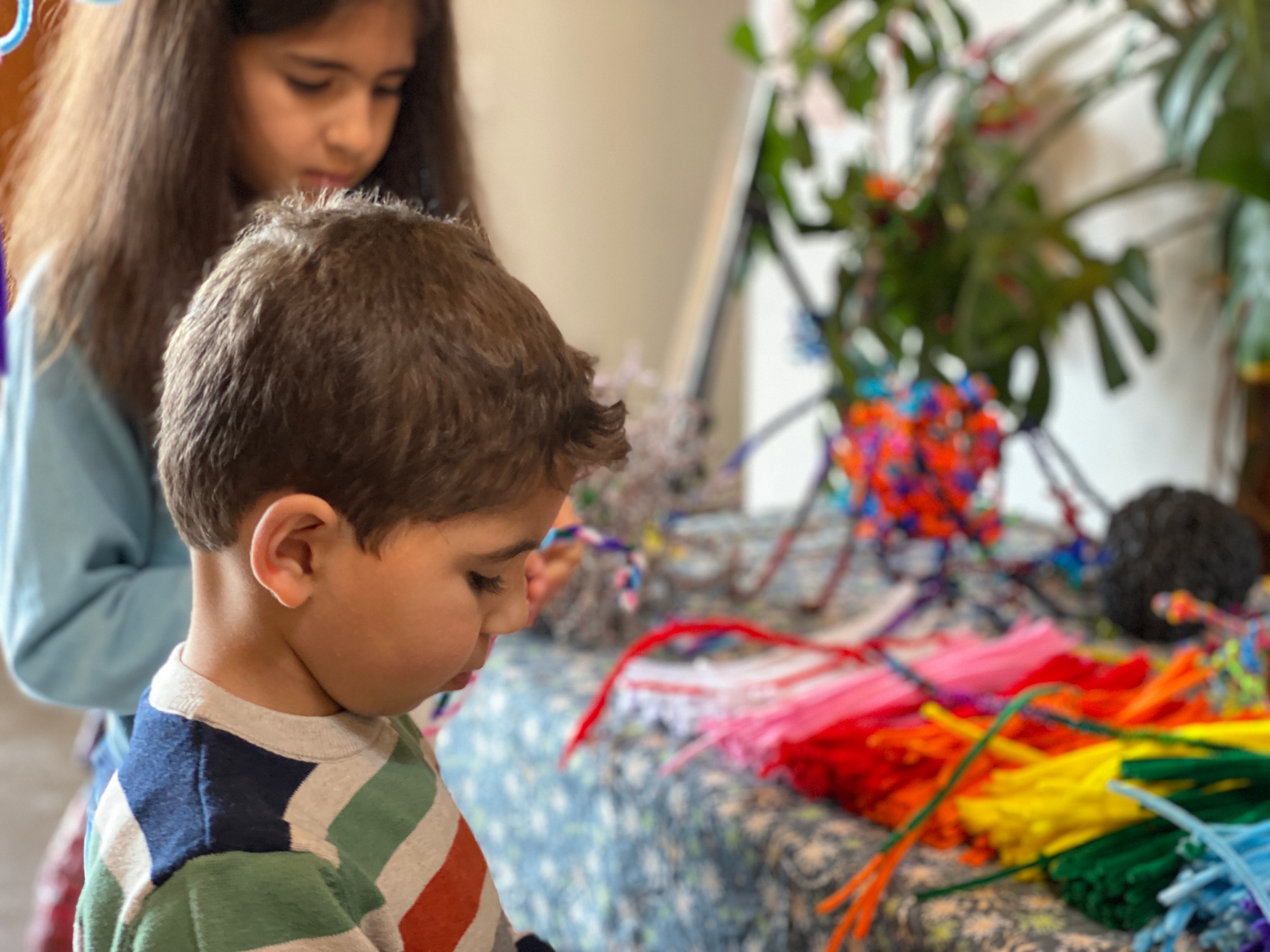
As Albert Einstein once stated, “after a certain high level of technical skill is achieved, science and art tend to coalesce in esthetics, plasticity, and form. The greatest scientists are always artists as well.”
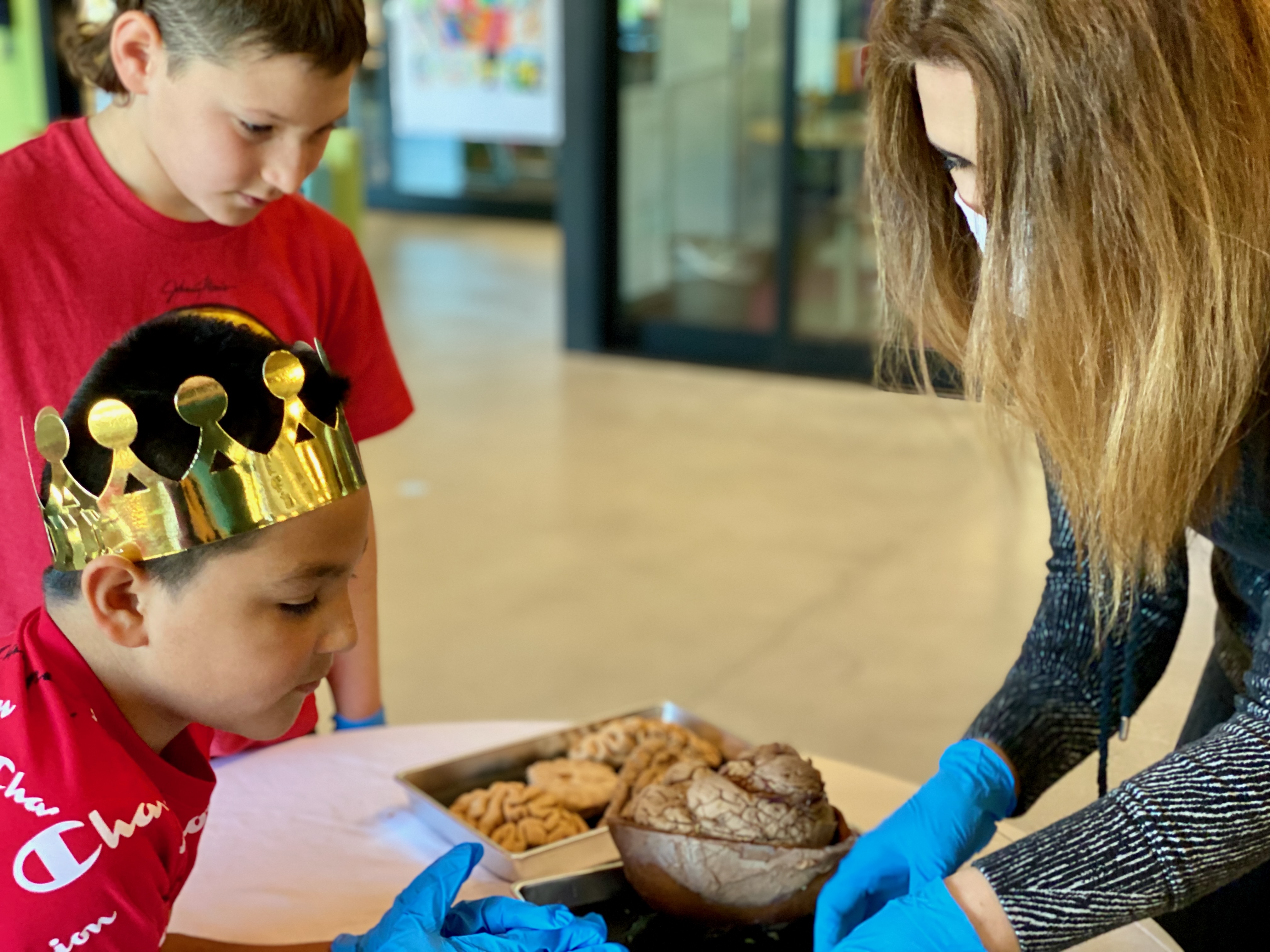
Einstein also believed that “arts and sciences are branches of the same tree” and how “we do art when we communicate through forms whose connections are not accessible to the conscious mind, yet we intuitively recognize them as something meaningful.” It is apparent that science is not readily available to all, and I’ve learned that there is no better way than the NW Noggin approach to making neuroscience and the latest research and discoveries accessible to everyone and providing an equal opportunity especially for those not currently overrepresented in science, art and society.
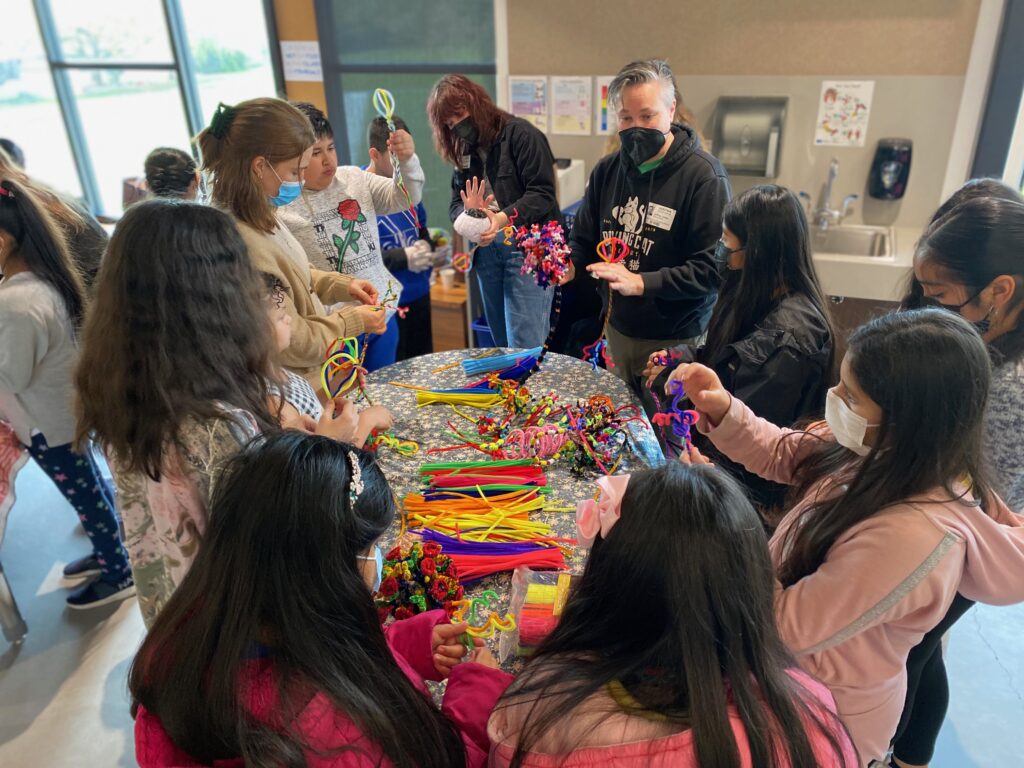
LEARN MORE: Art according to Albert Einstein
LEARN MORE: Branches from the same tree: The case for integration in higher education
LEARN MORE: A very public affair: art meets science
LEARN MORE: The Diversity–Innovation Paradox in Science
LEARN MORE: Who is in the Biomedical, Clinical, Behavioral and Social Sciences Research Workforce?
I joined the NW Noggin outreach group to share ideas and teach students about the brain and its function in the hope of igniting a spark of passion for neuroscience in children. During my first collaboration with NW Noggin, I had the opportunity to work with children in Ogden elementary school in Vancouver, Washington. The children’s excitement, curiosity and questions about the brain, neurons and how we function as humans were phenomenal.
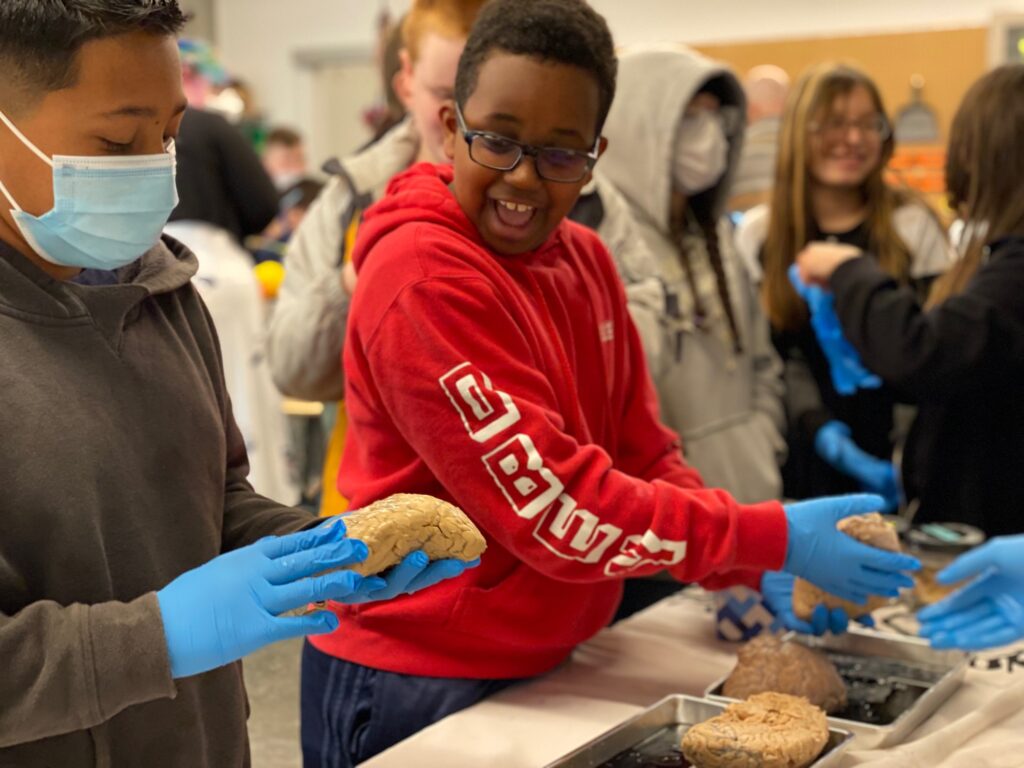
One specific question that a third grader asked in regard to Dr. Griesar’s talk about the action potential and the electrical signals of the communicating neurons was “how are electrical signals in our brain similar to the electricity in a wall socket?” Dr. Griesar beautifully explained how the electricity running through the wires in the wall are generated by the motion of free electrons and how the neurons in our brain and body communicate through the motion of charged ions across the cell membranes. Other volunteers chimed in with their own knowledge about the relationship. That student’s question reminded me of how I was also stunned when I first learned about how human beings function, move, communicate, behave and feel through conduction of electrical currents by neurons. A very fascinating Ted Talk by Adam Cohen explains how these scientists study the electrical activity of neurons in the brain and how new discoveries help us treat diseases that are related to neural malfunctions.
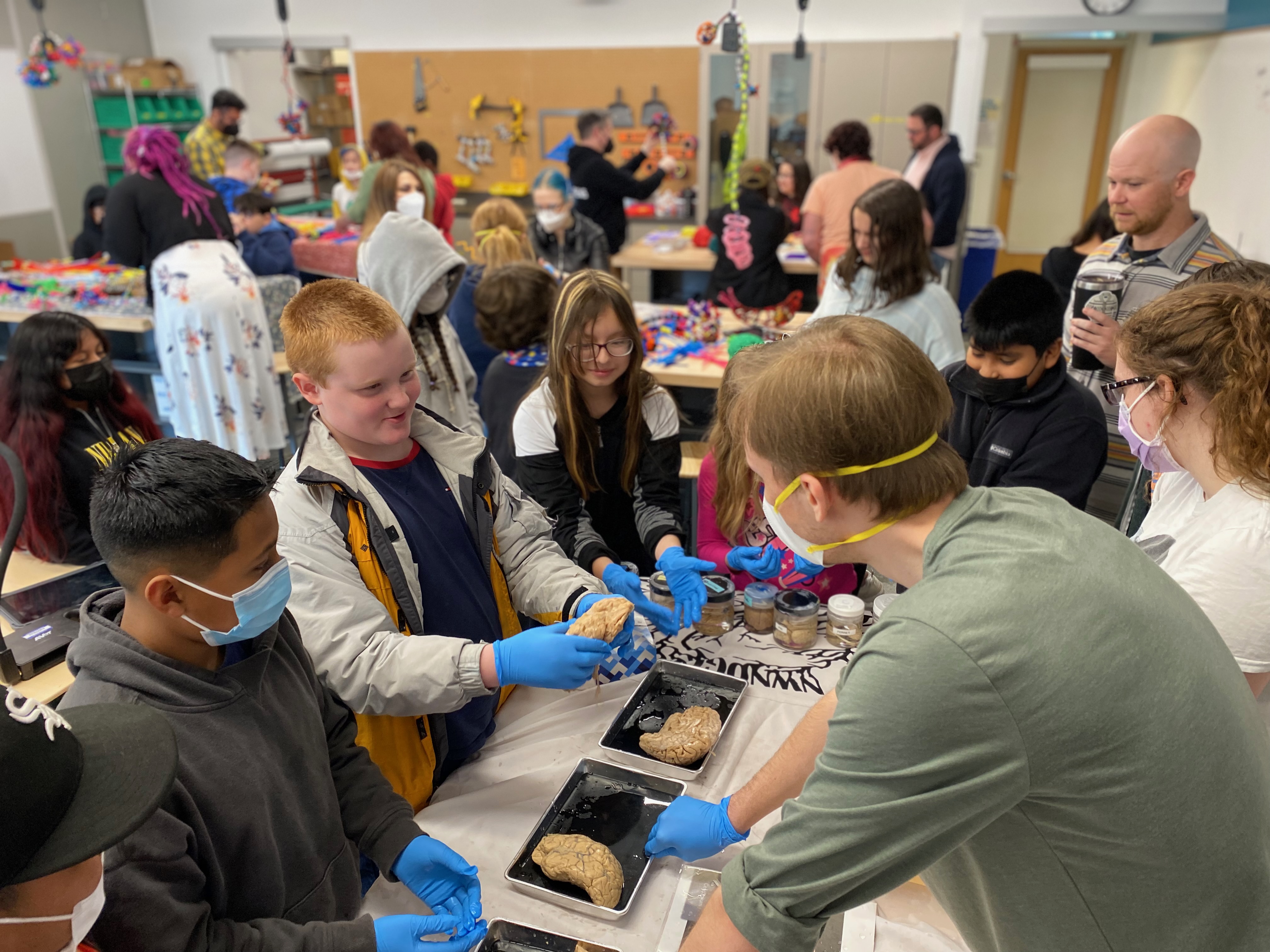
LEARN MORE: Art, brains & GUTS at Ogden!
Watching children’s enthusiasm and excitement about seeing and touching the real human brains was very rewarding. Some were so eager to touch the real brains and look at all the different animal brains on the table while others were a little skeptical at first. Being able to touch a real human brain might be a once in a lifetime opportunity for many students and I believe this will be one of the highlights of their early educational journey. Many children were also fascinated by our 3D brain models that were printed from MRI data of actual human brains. Many students participated at the art station where Professor Jeff Leake was making neuron prints out of plants and inks. What I love about this program is how children get to learn about neuroscience with a hands-on experience not only by touching brains but by making art and pipe cleaner neurons. In my opinion, the joy and excitement that this distinctive tactile learning experience provides about the brain and the nervous system is a model that needs to be incorporated in the entire education system where all children from any socioeconomic background can benefit.
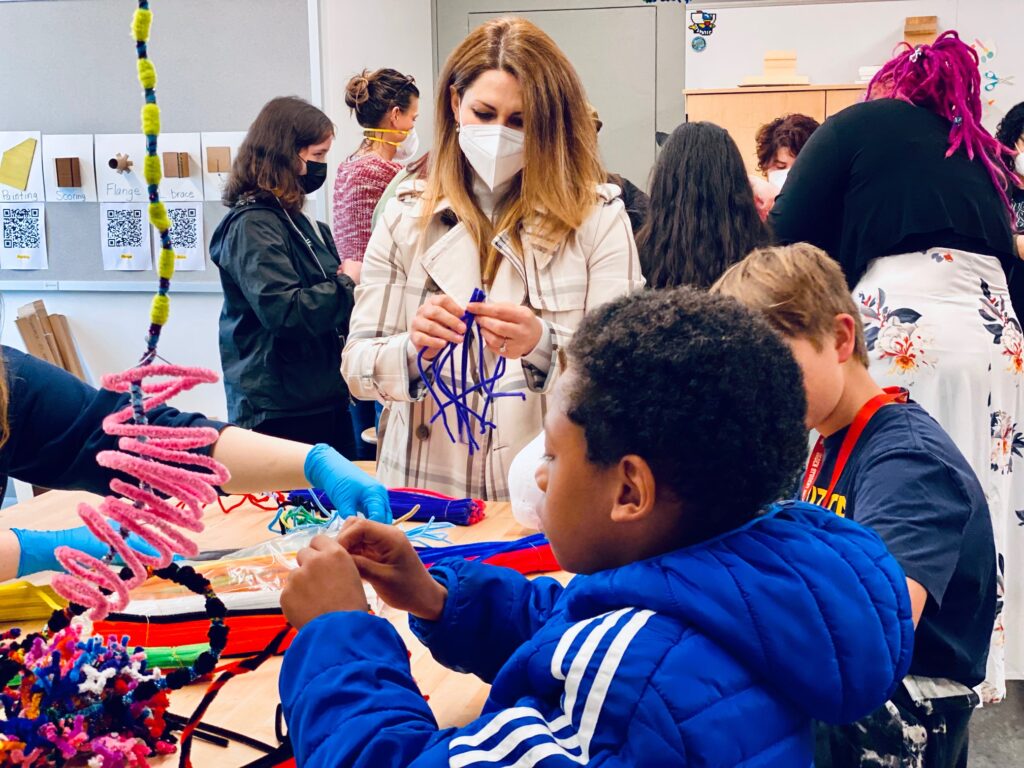
The Noggin event at MLK public elementary school, also in Vancouver, was another successful experience followed by many interesting questions that led to enriching conversations about the brain and its function. The looks on children’s faces when they learned that they were going to see and touch the real human brains were priceless. In MLK we had the opportunity to interact with a larger group of students and to answer many more interesting questions. Questions such as how does the brain function? What happens if you have an artificial brain? Do ants have brains? How does the spinal cord work? What is my brain made out of? When did you know you wanted to study the brain? Is it normal to get dizzy? How do we remember? And so many more!
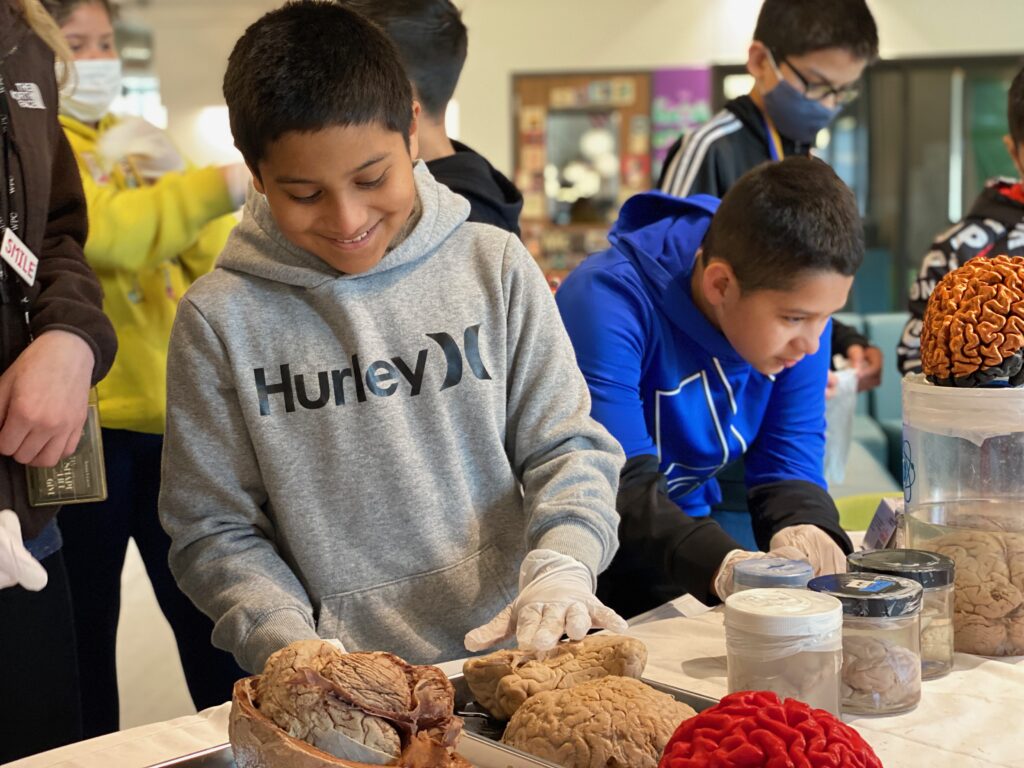
LEARN MORE: Enamored by Neuroscience!
The questions students asked proved a good test of my own knowledge as well, which makes me realize how much I already know about the brain and what I would like to learn more about when I don’t have an answer to some of their questions. A second grader asked me what parts of the brain were involved in our emotions which made me want to know more about that myself. The meta-analysis done by Lindquist et al., (2015) is an interesting read that sheds some light on this subject.
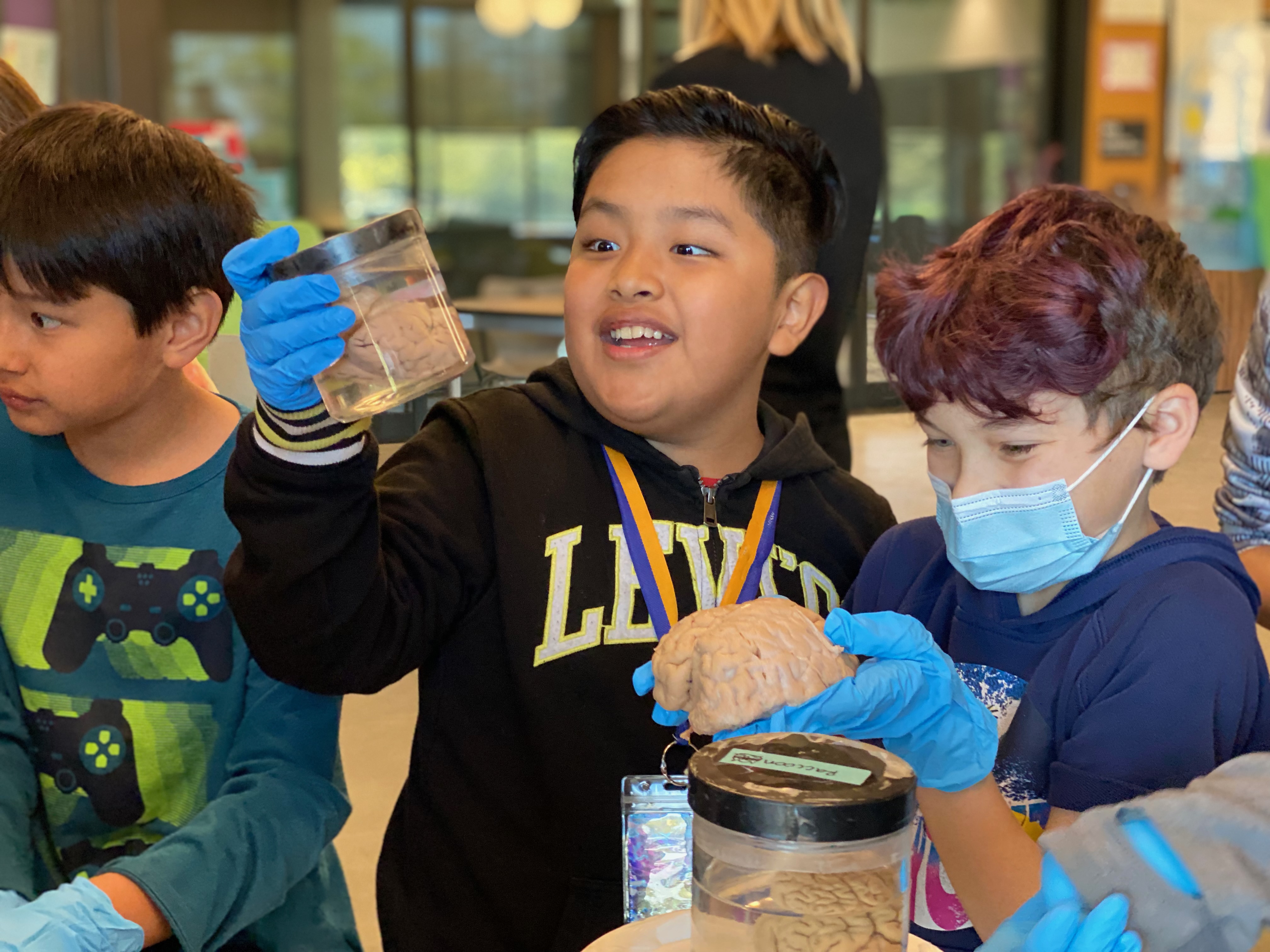
The most recent event I joined was NOGGINFEST, which I attended with my family to share the joy of learning about our brains. My eight-year-old daughter and my five-year-old son as well as my husband got to experience touching real human brains for the very first time.
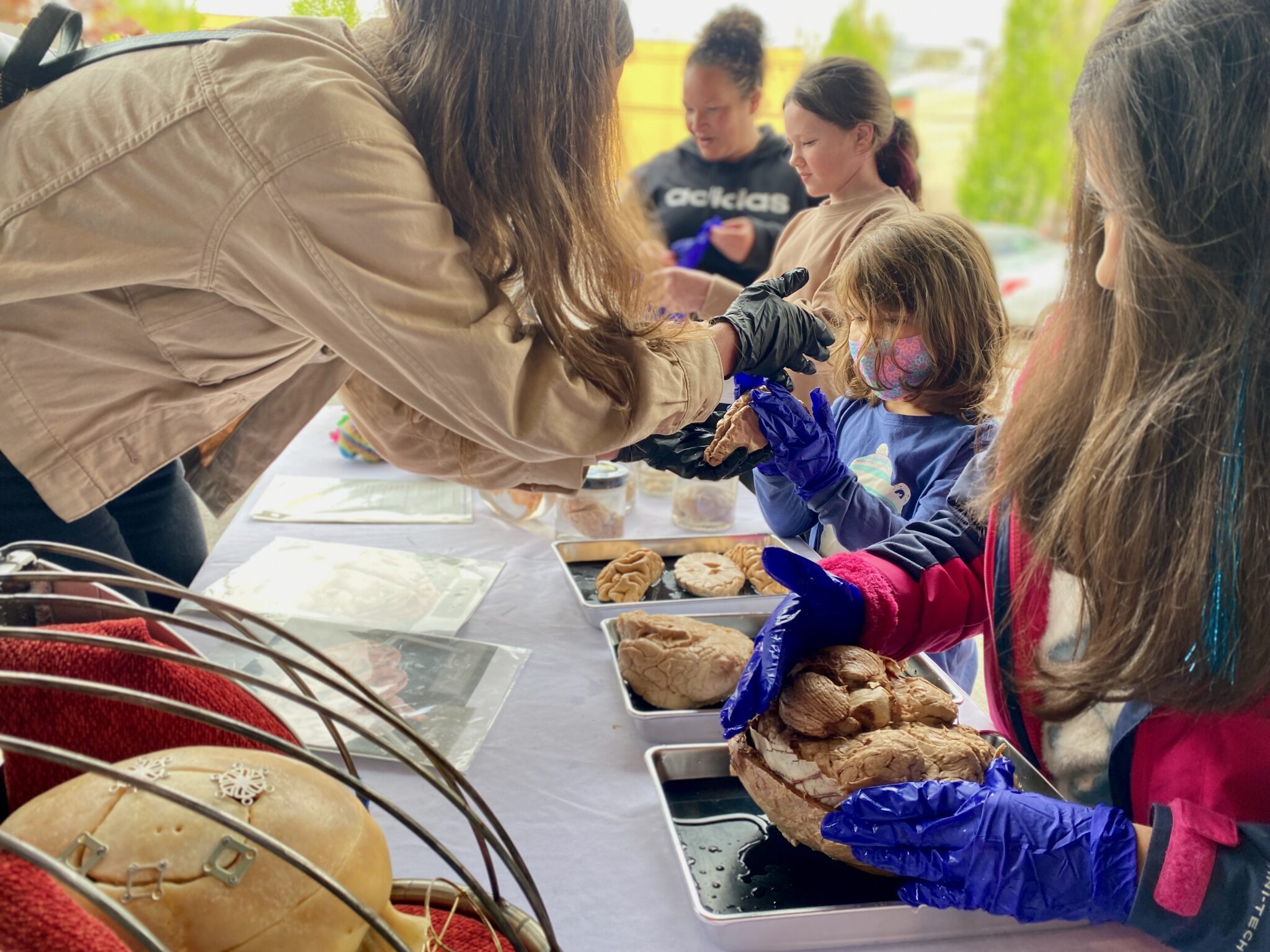
LEARN MORE: NOGGINFEST
As a neuroscience enthusiast I always wished my children would be equally fascinated by science and by learning about the brain, which I am personally very passionate about. Working with NW Noggin provided this opportunity for my family to also be involved in the learning process, by asking questions and making pipe cleaner neurons and learning about how our brain cells work. Another highlight was working with the transcutaneous electrical nerve stimulation (TENS) device that could control the ulnar nerve by placing electrodes to control the movement of the fingers between two people. I enjoyed explaining different part of the brain to visitors who had very interesting questions such as what part of the brain is involved in consciousness and what constitute our emotions.
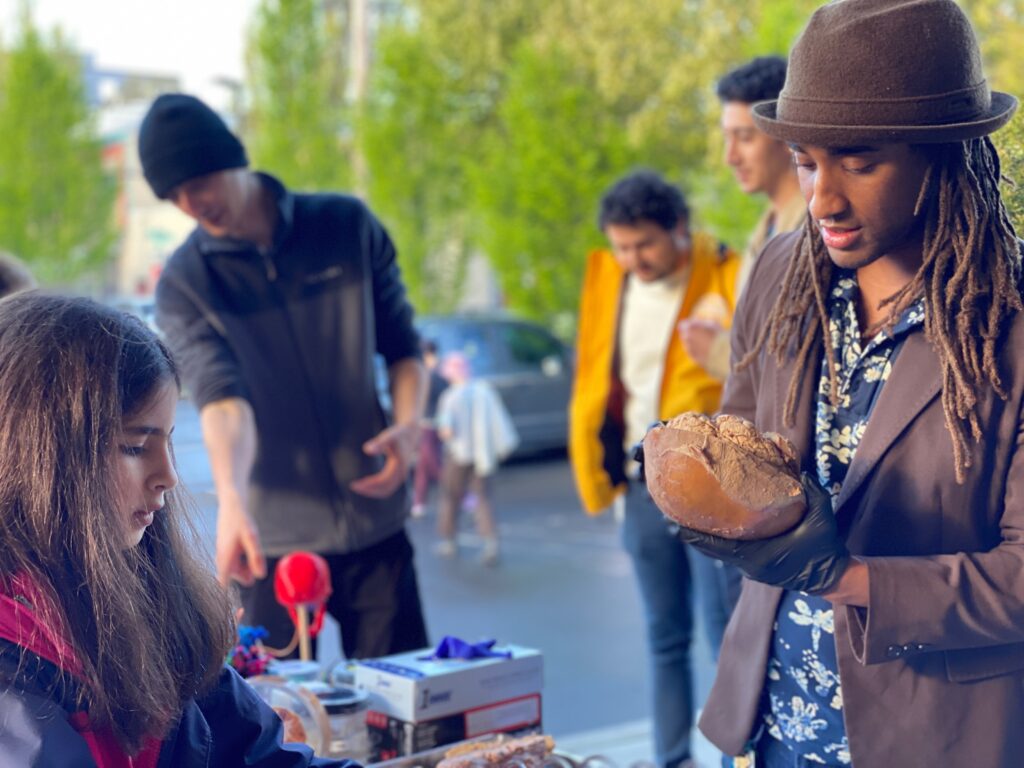
NW Noggin facilitates a friendly learning environment for both participants and volunteers as we are all still learning about the brain. Working with people, especially children is the most amazing part of this outreach and I love listening to the interesting questions they have and answering them to the best of my abilities. My daughter had been watching me and listening to what I had to say about the brain and the skull when I was explaining them to our visitors alongside with my fellow students/volunteers. Toward the end she had learned and gathered enough information to carry on conversations with people who were kindly and patiently listening to her explain aspects of our noggins. I am amazed by how quickly children learn and retain information. There was my little scientist in training, explaining the brain with her newly acquired knowledge. Children usually make a good use of those hundreds of billions of neurons.
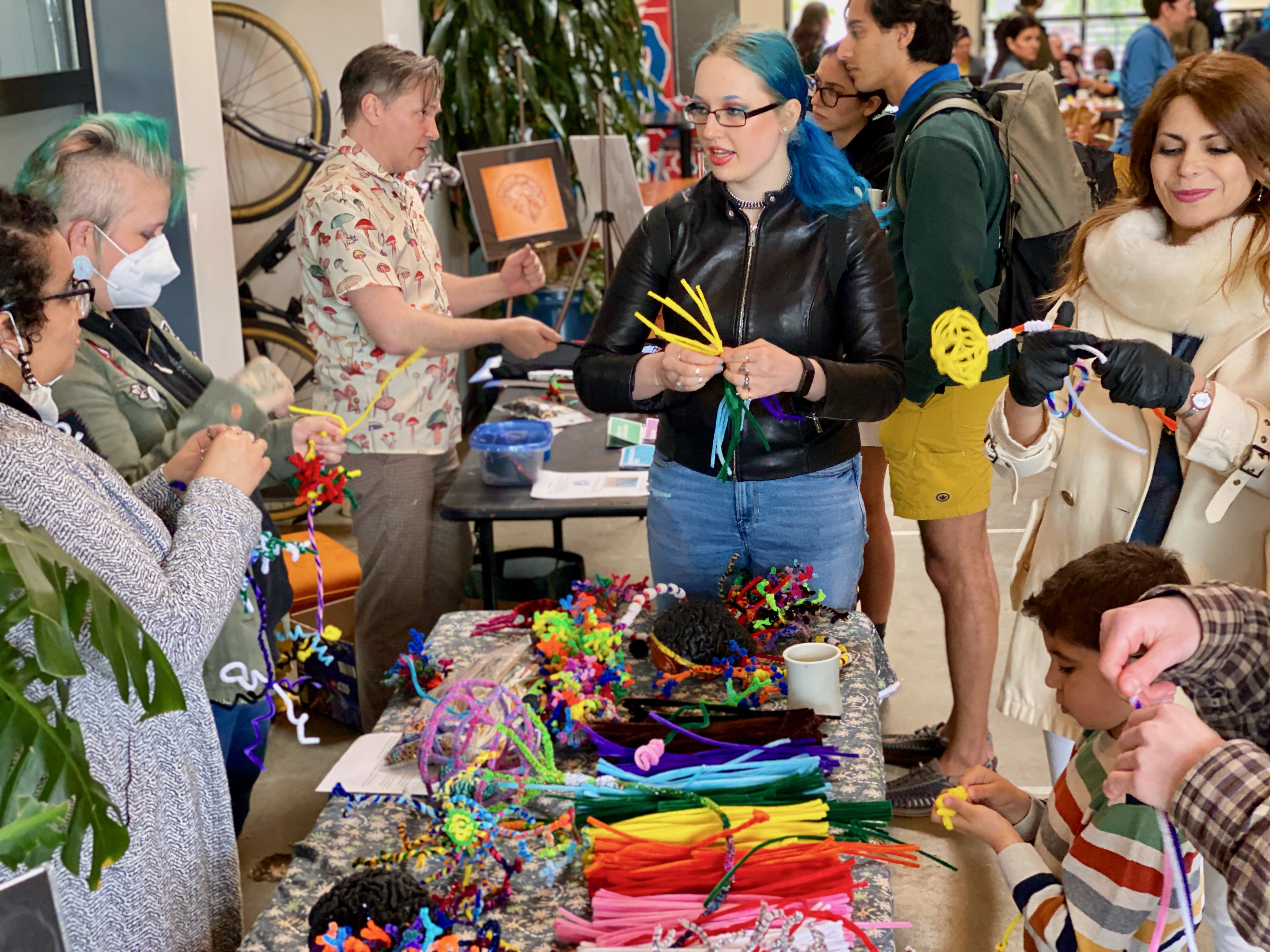
Our day at NOGGINFEST got even more delightful as one of the kind researchers from Oregon Health and Science University (OHSU) who was also helping us at the event gifted my daughter a mouse brain. The whole experience left a mark in my children’s memory as this was such an exceptional experience for them and I am sure that was the case for many of the adults as well as the younger participants. The power of this neuroscience outreach is to engage people in conversations that leads to learning and sharing constructive ideas.

Having hands-on, interdisciplinary, art, brain and music events really excites the public about science and opens new doors to communication. NOGGINFEST was a unique experience with live music and learning about the latest discoveries and research that my family and I will always cherish.


